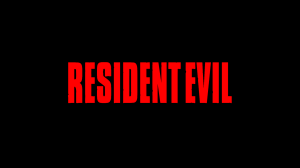Turn on the Travel Channel on any given day and you’ll eventually be treated to one of many programs focusing on the mythical Bigfoot. Whether it’s an investigation into capturing the famed creature or a history lesson, a majority of these programs put the emphasis on entertaining their audiences over the reality of whether such a creature exists in the first place. While Hulu‘s three-part series Sasquatch might immediately turn off the more skeptical viewer, fearful that we’ll see investigators claiming any piece of hair they find is proof of the beast or sequences of hosts jumping at any sound in the woods, Sasquatch instead reminds us one something far more frightening: the horrors of humanity.
Videos by ComicBook.com
Back in 1993, journalist David Holthouse found himself in a farmhouse in Northern California when a horrified witness barges in, claiming to have witnessed bodies that had been murdered and torn apart, with Bigfoot being blamed for the crimes. Decades later, Holthouse has a difficult time recalling if this event really occurred, if he misremembered details, or if it’s possible three workers on a cannabis farm had really been killed. As he begins to unravel the foggy memory, he finds far more than he bargained for, resulting in him never looking back at that moment the same again.
If you think a trio of murders, supposedly carried out by Bigfoot, is something that would have made national headlines, you’re not alone. A key component of what makes Sasquatch work is that Holthouse, who is the series’ primary focus, knows that he’s an unreliable narrator and hopes to set the record straight, not only for viewers, but more so for himself. We all have encounters or memories that have gone foggy over the years, blurring the line between reality and imagination, yet most of these don’t keep us up at night. However, if you had truly come that close to a series of murders, it’s easy to see how, no matter how bizarre the experience might seem in retrospect, you’d want to find the answers.
At its core, Sasquatch gives us everything a true-crime fan wants from such a series: a passionate protagonist, an unsolved crime, and the opportunity to witness an unexpected corner of life that is many people’s daily reality. Holthouse takes all the expected steps to find answers about these crimes, from pursuing leads to following up with former connections to even tracking down key figures from the community who might not want all of their activities broadcast for the world to see. Holthouse’s quest, and therefore director Joshua Rofé’s depiction of this journey, is laser-focused and never deviates into unnecessary territory.
What sets this series apart from its contemporaries, however, is that it is intrinsically connected with a big, hairy monster said to wander the woods for centuries, yet no one has been able to come even close to proving exists in the first place. A far cry from any other Bigfoot investigation series, Rofé defies pandering to some of these outlandish theories, yet he also never dismisses them. A brunt of the gravitas of the series falls squarely on the shoulders of Holthouse, though Rofé also features a number of scientists, supposed witnesses, and even Bigfoot “hunters” (also known as “Squatchers”) to explain how, if such a creature were to exist, it’s likely that it could spend decades in the California wilderness yet evade capture this whole time. The series even sits down with Robert Gimlin, who captured the most iconic footage of Bigfoot to date, as the beast seemingly took a stroll through Bluff Creek back in 1967. Holthouse’s recollections of embedding himself with neo-Nazis are treated with the same tone as those witnesses claiming Bigfoot attacked their tent as a kid, highlighting the power, and problems, with human memory. The longer you believe in something, the easier it is to take it as reality.
One of the biggest successes of Sasquatch is that, wherever the investigation might end up, it’s easy to believe that something potentially inhuman is going on in this part of the country. While this could allow some viewers to believe that a massive beast really does lurk in the woods, others will comprehend the lengths that some of the seedier residents of the area are willing to go to in order to protect what’s theirs. Whether this means crimes could be committed as part of a turf war or as an act of vengeance isn’t revealed in the first episode, though the stage is set for any number of outcomes for the investigation, as the “Emerald Triangle” of Northern California feels less like a remote part of the country as it does feel like an entirely different planet whose residents have little regard for human life.
With a countless number of true-crime series debuting at what feels like an hourly basis across all platforms, Sasquatch manages to find the right balance of honoring the seemingly real-life victims of these crimes and the inherent tragedy of the situation along with the outlandish idea that something otherworldly could have been involved. Rofé immerses the viewer in a world of monsters, both of the human and beastly variety, to document one man’s search for corroboration of an event that seems bizarre beyond belief, setting the stage for a truth that would be better off forgotten in a riveting, twisted, and shocking journey.
Rating: 4 out of 5
Sasquatch has its world premiere at SXSW and debuts on Hulu on April 20th.









